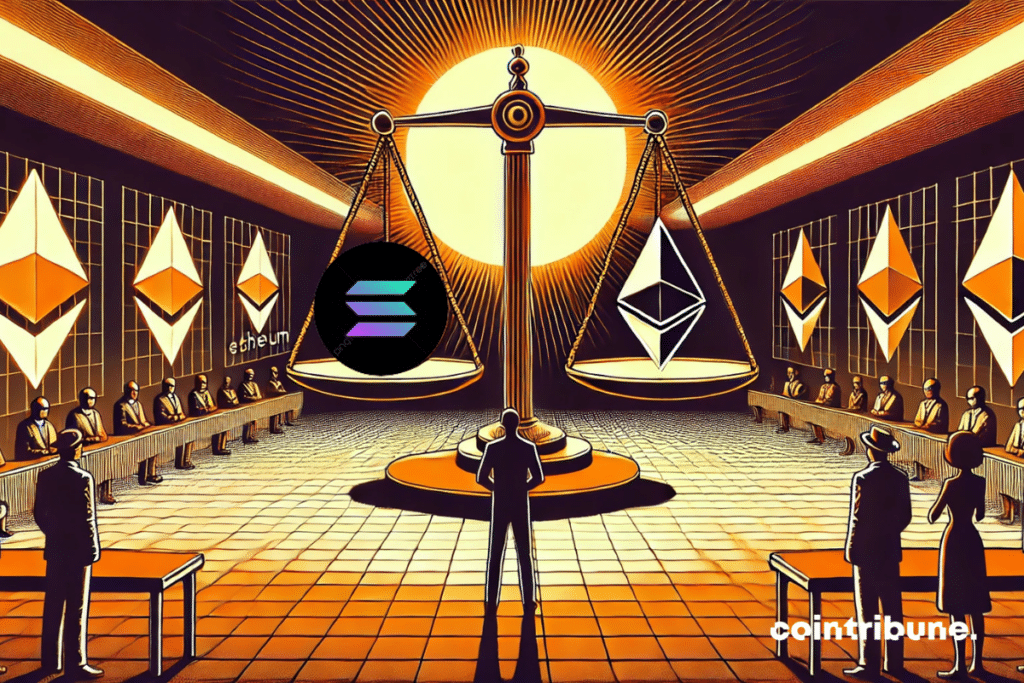Uniswap Founder Says Solana May Be A Better Fit For DeFi Than Ethereum
19h05 ▪
3
min read ▪ by
Hayden Adams, founder of Uniswap, believes that Solana is currently the best blockchain for scaling decentralized finance (DeFi) at the layer 1 level. This stance reignites the debate on the limits of Ethereum’s modular model.


In Brief
- Hayden Adams, CEO of Uniswap Labs, acknowledges Solana’s strengths for Layer 1 DeFi.
- Ethereum favors a modular approach while Solana excels in monolithic architecture.
- A debate is emerging on the future of blockchain platforms and their respective specializations.
Solana, a More Favorable Ground for DeFi According to Uniswap
Hayden Adams, founder of the renowned Uniswap protocol, did not mince his words:
Solana has a better roadmap, a better team, and a better approach for L1 DeFi.
This statement comes in a context where Ethereum, once the undisputed bastion of DeFi, seems to be moving towards a modular architecture with growing reliance on layer 2 solutions.
In contrast, Solana continues to bet on a monolithic approach, meaning direct and unified execution on the base layer. For Adams, this vision is more coherent with the needs of DeFi, which demands speed, efficiency, and low transaction costs.
He considers that returning to a robust and scalable layer 1, like Solana’s, would be healthier in the long term for the ecosystem.
This position opposes that of David Hoffman (Bankless), a strong Ethereum advocate, who claims that no other blockchain can match the security and resilience of the network. According to him, Ethereum L1 remains “the natural home” of DeFi, while L2s must play a role in congestion relief.
A Technical but Strategic Debate
The difference in opinions between Adams and Hoffman reflects a deeper divide on the future of blockchain: should everything be built on a single base, or should functions be fragmented across multiple layers?
For Adams, the multiplication of L2s adds unnecessary complexity and dilutes the user experience. He thus calls for refocusing efforts on blockchains capable of natively handling DeFi volume without an additional layer.
In this view, Solana presents undeniable strengths: high throughput, low fees, and an increasingly mature development environment. Qualities that are attracting more and more DeFi projects seeking a high-performance alternative to Ethereum.
This vision contrasts with Ethereum’s modular approach, where applications are increasingly deployed on layer 2 solutions, prioritizing main layer security while seeking performance elsewhere.
Adams’ position suggests a more nuanced view of the blockchain landscape, where each platform could excel in specific areas. This perspective is even more interesting as Uniswap Labs recently launched Unichain, its own layer 2 solution on Ethereum, while deploying its version 4 across twelve different blockchain networks.
Maximize your Cointribune experience with our “Read to Earn” program! For every article you read, earn points and access exclusive rewards. Sign up now and start earning benefits.
Passionné par le Bitcoin, j’aime explorer les méandres de la blockchain et des cryptos et je partage mes découvertes avec la communauté. Mon rêve est de vivre dans un monde où la vie privée et la liberté financière sont garanties pour tous, et je crois fermement que Bitcoin est l’outil qui peut rendre cela possible.
DISCLAIMER
The views, thoughts, and opinions expressed in this article belong solely to the author, and should not be taken as investment advice. Do your own research before taking any investment decisions.